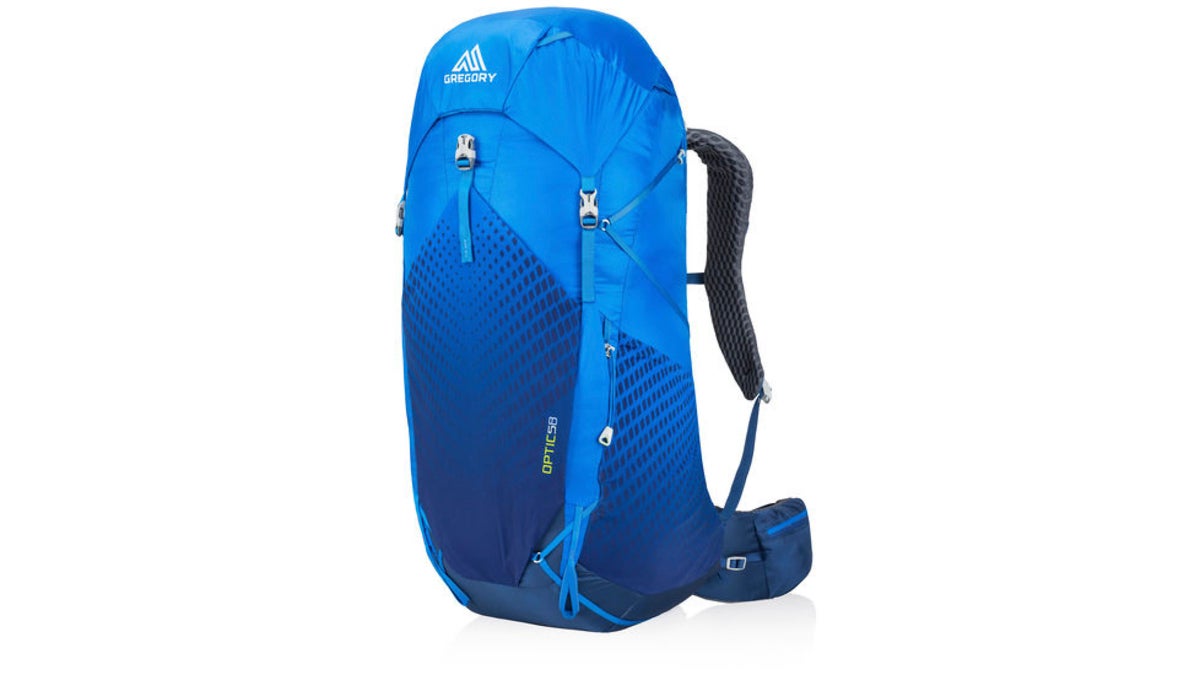Products You May Like
Get full access to Outside Learn, our online education hub featuring in-depth fitness, nutrition, and adventure courses and more than 2,000 instructional videos when you sign up for Outside+
Sign up for Outside+ today.
A backpack is your premier piece of hiking gear, and should fit the type of hiker you are and the trip you’re heading out on. Aiming for a slow pace and basecamp luxury? Bring a full-featured pack that can help you schlep all that gear. Going fast and ultralight? Carrying a minimalist model that will help you shave weight and move fast is your best bet. If the latter sounds like the type of adventure you’re seeking, these five high-performing ultralight packs will best your best friend on the trail.
What to Consider When Purchasing an Ultralight Backpack
Ultralight packs come in two basic versions: Ones with full suspensions—think internal frames or frame sheets and stiff backpanels—and ones without. If you’re carrying a kit that’s truly dialed for ultralight hiking (say, a total weight of 20 pounds or less), you can probably choose a pack that doesn’t have a robust suspension. The pack itself will be lighter, paring down your kit weight even more, but if you increase your load you might experience some back or shoulder discomfort. If you opt for a full-suspension model, your pack will weigh more, but you’ll also be able to carry loads of 30 pounds or heavier, enough for a multiday trek without resupply or a relatively luxurious weekend trip.
Durability can also vary between ultralight packs. Many brands use robust fabrics, such as Dyneema, X-Pac, and other high-tenacity materials, to extend the life of a pack without adding much weight. While these fabrics offer superb longevity, they also make the models that use them quite expensive. There are ultralight packs made from more run-of-the-mill nylon for less money, but they might degrade faster as well.
Finally, consider the features that you want on your pack. Some ultralight packs are basically blank slates, just a packbag attached to a shoulder harness. Others have pockets and attachment points galore, but they’ll generally be heavier and more expensive.

Best All-Around: Mountainsmith Zerk 40
- Price: $220
- Weight: 1 lb. 12 oz.
The Zerk was designed in conjunction with The Hiking Viking, a Triple Crowner who clearly knows his stuff. He and Mountainsmith created a veritable backpacking control center. Let us explain. Running-style vests on multiday packs are becoming more common, as they provide instant access to all the things a hiker might need on the go: snacks, lip balm, sunglasses, a phone. The harness on the Zerk is the best of the bunch. Its wide straps spread out loads up to 30 pounds without shoulder discomfort during long water hauls on the CDT, and they have a constellation of little stretchy and cinchable pockets that keep everything at hand. (Bonus: The pockets also give you an easy place to tuck microtrash you pick up.) Pair that with easy-access waterbottle pockets and a mesh shove-it pocket on the back and you have a medium-volume pack with a layout that will keep you moving whether you’re out dayhiking, camping overnight, or on a thru-hike bid. (One tester hiked 1,700 miles in the Zerk on the CDT.) The packbag is large enough to fit a camping kit (a bear can sits on top with removable straps), and the rolltop secures everything down nice and clean. The Zerk’s nylon-and-Spectra material stood up to bushwhacking, but a few glissades opened holes in the mesh shove-it pocket. Stick mostly to trails and we expect the Zerk to give years of comfy, quick-access service on a wide variety of low-pack-weight trips. –Corey Buhay
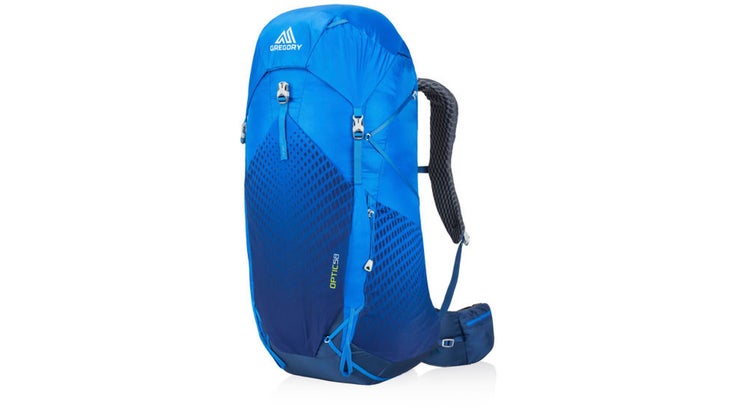
Best Suspension: Gregory Optic 58/Octal 55
- Price: $210
- Weight: 2 lbs. 6 oz.
At this point, having used the Optic for three hiking seasons, I barely consider it an ultralight pack anymore. Of course, it is: Even with its 58-liter capacity, which is plenty for a four-day hike, it weighs less than 2.5 pounds. That light weight belies its full suspension, a tubular aluminum frame that has allowed me to comfortably carry 35 pounds or so on trips through Colorado’s Collegiate Peaks and Wyoming’s Wind River Range, along with plenty of places in between. The Optic is also chock-full of features, including trekking pole attachments, a removable toplid, an included raincover, and both a stretch-mesh stash pocket and the front and easily accessible water bottle pockets on the side. Rare for such an ultralight offering, this pack has a trampoline backpanel that’s bracketed by the aluminum frame to mitigate pack-sway. The air space between the mesh and the packbody leaves plenty of room for heat and sweat to escape, meaning you can schlep gear in midsummer conditions without getting too swampy. –Eli Bernstein
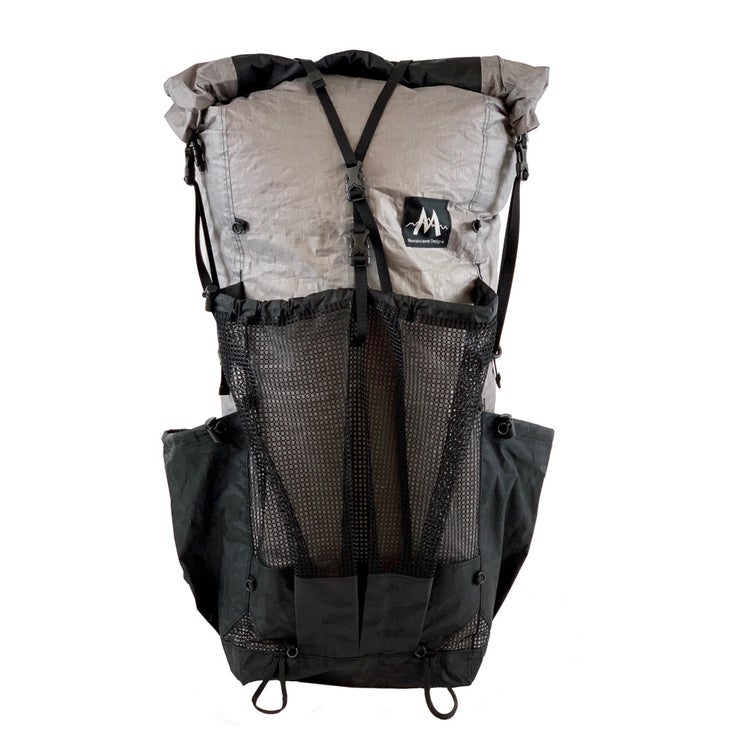
Lightest: Mountain Laurel Designs Prophet DCF 48
- Price: $285
- Weight: 1 lb. 1 oz.
At the cutting edge of ultralight packs, it’s tough to keep shaving weight without also paring down comfort. The frameless Prophet DCF hits the balance perfectly: EVA padding on the shoulder straps and hipbelt keep it feeling good, even at max capacity, and the wide hipbelt wings transfer weight comfortably to the hips. We appreciated the extra-durable, waterproof Dyneema bottom, backpanel, and side pockets. (They’re made of 5-ounce Dyneema as opposed to the thinner 3-ounce version on the rest of the packbag.) Those sections deflected thick spruce branches and shed moisture in Yellowstone National Park, and even the wide mesh shove-it pouch evaded rips. Miss: The pack’s side pockets can each fit a two-liter Platypus, but are tough to reach while hiking. –CB
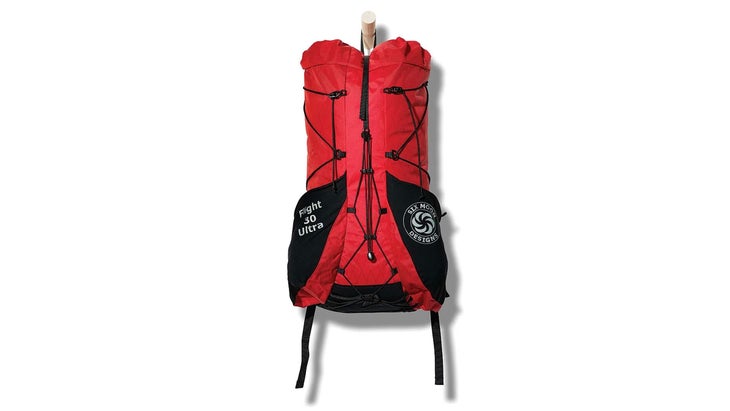
Most Durable: Six Moon Designs Flight 30 Ultra
- Price: $285
- Weight: 1 lb. 1 oz.
The main reason I loved testing the Flight 30 Ultra: It kept all my necessities within arm’s reach as I moved down the trail. I tested a version of the pack with the “vest harness” option (you can also purchase it with a traditional shoulder harness), and the vest’s shoulder water bottle holder and three other pockets (one zippered) held my hydration, keys, and drivers license with room to spare.Although the Six Moon Designs Flight 30 Ultra does not have a frame, the pack remained comfortable and stable while I carried loads up to 20 pounds. Credit the 8.5-inch-wide vest straps, which distributed weight evenly across my torso. The harness also ensured that the pack never slipped, no matter my body position, as I squeezed and twisted my way through the orange and yellow sandstone of Peek-a-Boo and Spooky Canyons in Utah’s Grand Staircase-Escalante National Monument. The Flight 30 Ultra I tested was made out of supertough VX21 material, which is a three-layer laminate comprised of 210-denier nylon and polyester. The packbody held up during tight canyon squeezes, and the waterproof fabric kept out precip on rainy hikes in Utah and Colorado. Opting for this material rather than robic nylon increases the pack’s cost significantly, but it should pay off in the longterm: There are no signs of wear or tear on my pack, just a slight layer of sandstone dust that reminds me of all those miles explored. –Robin Mino
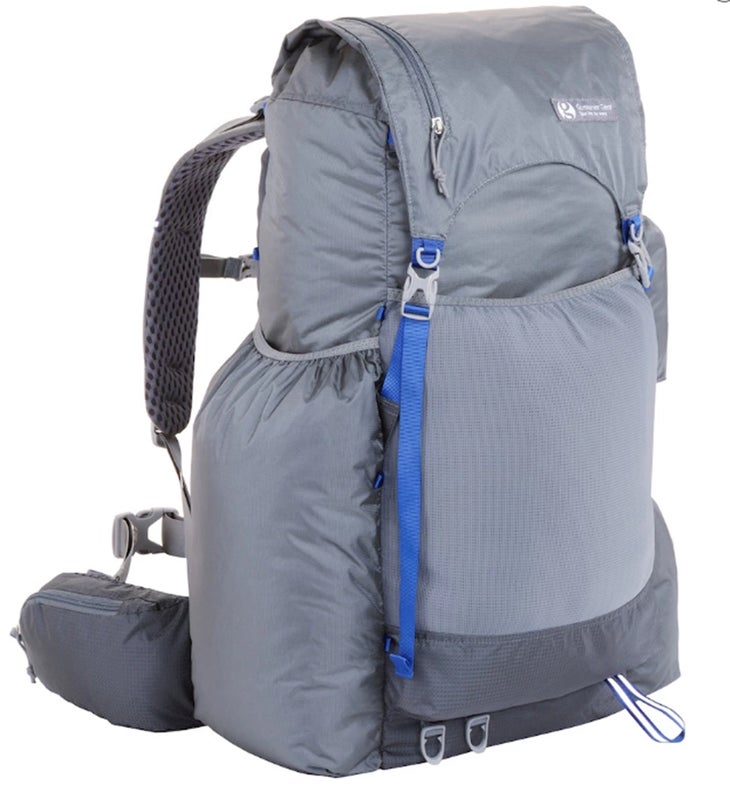
Best Carrying Capacity: Gossamer Gear Mariposa 60
- Price: $285
- Weight: 2 lbs. 1 oz.
Lightweight backpacking means movement, fast and constant, and every detail on the Mariposa 60 has one purpose: to keep you covering ground. The simple, cavernous packbag holds all the items you won’t need when you’re on the move (we had space for six days’ worth of gear and food on a hike around Colorado’s Gore Range), but it’s the positioning of exterior pockets that orients this pack toward big-mile days. A stretchy shove-it pocket on the front fits raingear, gaiters, and a hiking umbrella and has a drain hole to purge excess moisture. On the side, another tall, stretchy pocket swallows a tarp or minimalist shelter. “That’s the last thing you want to pack up on a rainy, cold day, anyway,” says our deputy editor. Pockets on the optional hipbelt ($45; highly recommended) hold a phone and sunglasses on one side, and a quart-size bag of snacks on the other. You shouldn’t overload a pack this light, but we found the Mariposa did fine with up to 35 pounds aboard—plenty for anyone with an ultralight kit. Credit the removable aluminum stay for the carrying comfort (though careful packing is required to prevent barreling). And when the day is done, slide out the closed-cell foam backpanel and double it over to use as a sit pad. The hipbelt comes in three sizes, but we found it runs bigger than advertised, so consider sizing down. Ding: The toplid is functional, if minimalist, but scores no points for elegance. –Casey Lyons
What a Backpacker Editor Looks for in an Ultralight Backpack
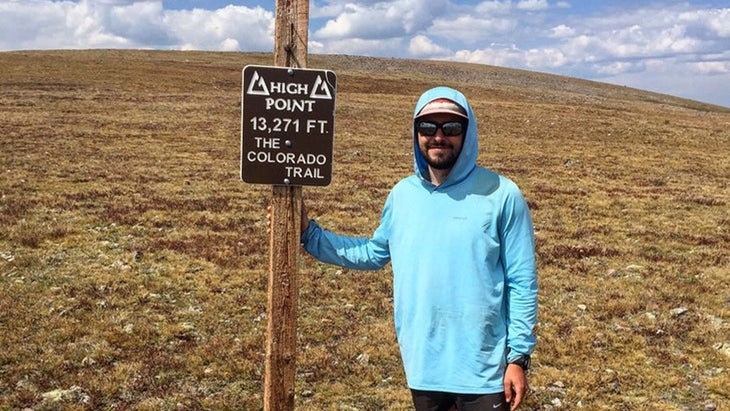
Benjamin Tepler, Associate Gear Editor: “I rarely carry a truly ultralight load on a backpacking trip—that is, less than 25 pounds. (Blame the down pillow…and the whisky). That means a stripped-down, frameless ultralight pack is a no-go. Rucksacks that are able to support at least 30 pounds thanks to a framesheet and/or stays while remaining lightweight are my goldilocks territory.”

Adam Roy, Senior Digital Editor: “Using a frameless pack takes even more commitment than sleeping under a tarp, but on the occasions where I can shave my pack down enough, they’re my preference. I usually look for a durable pack made from DCF, as I’m not very careful with my gear. For loads near the top end of my Mountain Laurel Designs pack’s carrying capacity, I partially unfold my closed-cell pad and stick it along my back as a replacement framesheet.
How to Maintain an Ultralight Backpack
Always empty your pack after a trip and hang it out to dry in a relatively cool indoor location. If you want to clean a pack made from ultralight material, such as Dyneema, hand-wash it with a dedicated gear cleaner, like those made by Nikwax. Use a toothbrush to remove any dirt and grit from zippers and frame nooks. If an ultralight pack suffers a rip, use a waterproof fabric patch to seal it, or take it to a professional.
